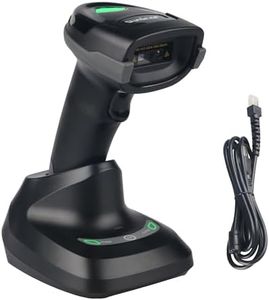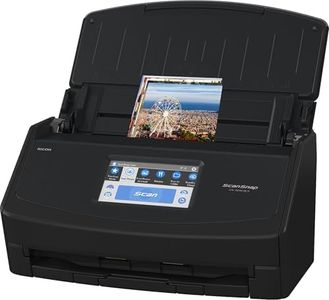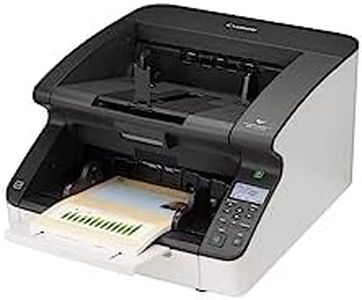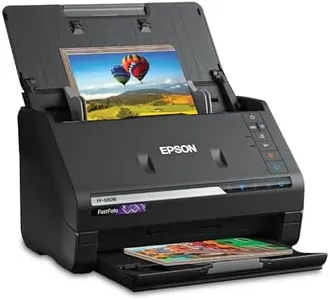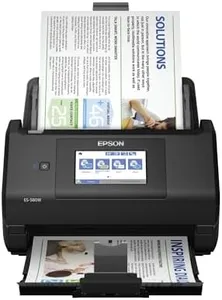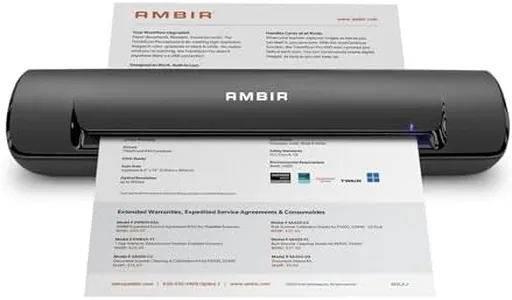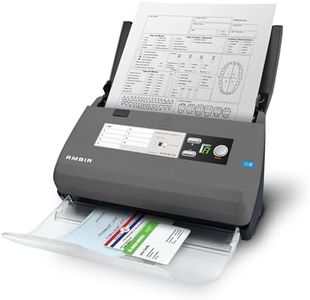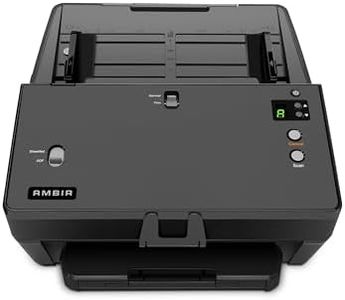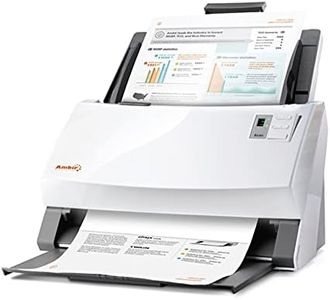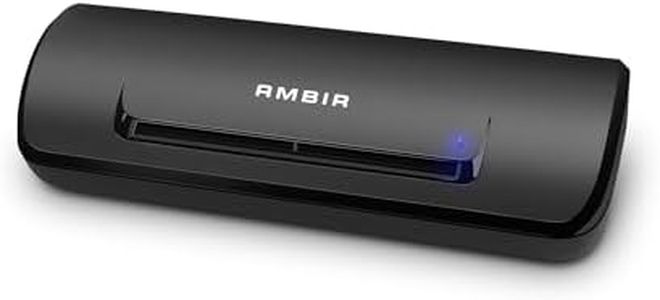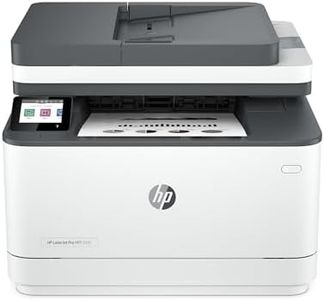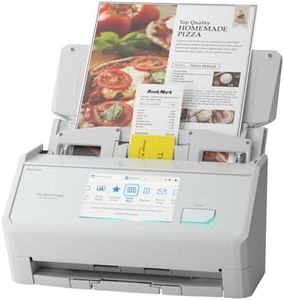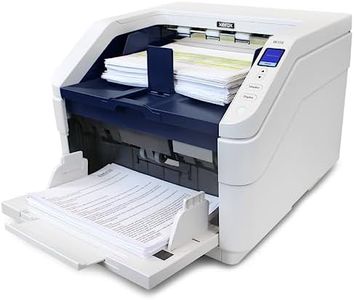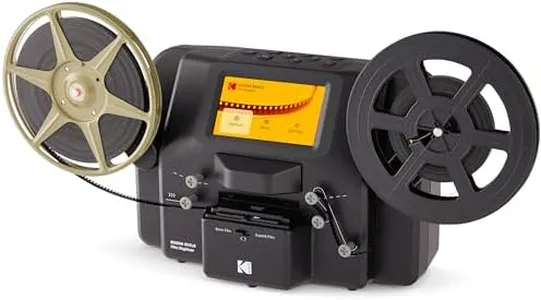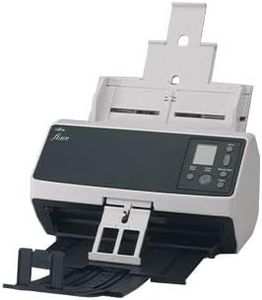10 Best Scanners 2025 in the United States
Our technology thoroughly searches through the online shopping world, reviewing hundreds of sites. We then process and analyze this information, updating in real-time to bring you the latest top-rated products. This way, you always get the best and most current options available.

Our Top Picks
Winner
ScanSnap iX1600 Wireless or USB High-Speed Cloud Enabled Document, Photo & Receipt Scanner with Large Touchscreen and Auto Document Feeder for Mac or PC, 17 watts, Black
Most important from
4829 reviews
The ScanSnap iX1600 is an excellent choice for individuals and small businesses looking for a reliable document scanner. One of its standout features is the fast scan speed of 40 pages per minute in duplex mode, making it efficient for handling large volumes of documents quickly. The large color touchscreen simplifies navigation and allows users to set up to 30 scanning profiles, which is great for tailored document management, whether for personal or team use.
When it comes to connectivity, the iX1600 offers both Wi-Fi and USB options, allowing for flexible placement and direct connection to smart devices and cloud services without needing a computer. This wireless capability adds convenience, especially for those who prefer decluttering their workspace.
Another strength is the software that comes with the scanner, ScanSnap Home, which makes managing and organizing scanned documents, photos, and receipts straightforward. This can significantly enhance productivity and ensure that important documents are easily accessible. However, while the resolution of 600 dpi is suitable for most everyday scanning tasks, it may not meet the needs of professionals who require extremely high-quality images, such as photographers or graphic designers. Additionally, the scanner is relatively bulky at 7.5 pounds and its dimensions might not be ideal for users looking for ultra-portability. Although it is compact for a desktop scanner, those needing an ultra-light, travel-friendly option might want to consider alternatives.
Most important from
4829 reviews
Canon imageFORMULA DR-G2110 Sheetfed Scanner - 600 dpi Optical
The Canon imageFORMULA DR-G2110 Sheetfed Scanner is a robust scanner designed to handle high-volume document processing. One of its standout features is its high resolution of 600 dpi, which ensures excellent scan quality for both text and images. This makes it suitable for businesses or individuals who need precise and detailed scans. Additionally, the 24-bit color depth helps in maintaining good color accuracy, which is beneficial for scanning color documents and images.
The scanner has a substantial sheet capacity of 500, allowing it to manage large batches without frequent reloading, thus improving efficiency in busy office environments. In terms of connectivity, it uses USB, which is reliable but lacks wireless options that many modern scanners offer, potentially limiting flexibility in some setups. The scanner is quite heavy at 56.5 pounds and large in size, making it less portable and requiring a dedicated space. This might be a drawback for small offices or home users with limited space.
The device was first available in 2018 and is compatible with various document types, including thick paper and business cards, which adds to its versatility. The Canon imageFORMULA DR-G2110 is best suited for large businesses needing a reliable, high-capacity scanner with excellent resolution and color depth, but it may not be ideal for users needing portability or the latest connectivity options.
Epson Workforce ES-400 II Color Duplex Desktop Document Scanner for PC and Mac, with Auto Document Feeder (ADF) and Image Adjustment Tools, ES-400 II
Most important from
1142 reviews
The Epson Workforce ES-400 II is a reliable document scanner suitable for both home and office use. Its standout feature is the 50-sheet Auto Document Feeder (ADF), which facilitates fast scanning of multiple pages, making it ideal for busy environments. With a resolution of 300 dpi, it ensures decent quality for most document types but may not be sufficient for high-resolution needs like photo scanning.
The scanner operates at a solid speed, accommodating a stack of documents quickly, which is beneficial for efficiency. The connectivity is USB-based, which is straightforward but less flexible compared to wireless options. The software suite, particularly Epson ScanSmart, is user-friendly and enhances functionality with features like automatic file naming, direct upload to cloud services, and easy integration with document management systems via the TWAIN driver.
The ability to create searchable PDFs and editable files using Optical Character Recognition (OCR) is a notable advantage for managing and editing scanned documents. Despite its capabilities, the color depth is relatively low at 8 bits per pixel, limiting its effectiveness for tasks that require high color accuracy. In terms of size and portability, the ES-400 II is on the heavier side at 8.14 pounds and has a moderate footprint, which may not suit users with limited desk space. However, its build is robust, ensuring durability. This scanner is best suited for users who need efficient document handling and integration with office workflows, rather than those needing high-resolution or highly portable solutions.
Most important from
1142 reviews
Buying Guide for the Best Scanners
Choosing the right scanner can significantly impact your productivity and the quality of your scanned documents. Whether you need a scanner for personal use, a small business, or a large office, understanding the key specifications will help you make an informed decision. Here are the main factors to consider when selecting a scanner that best fits your needs.FAQ
Most Popular Categories Right Now
